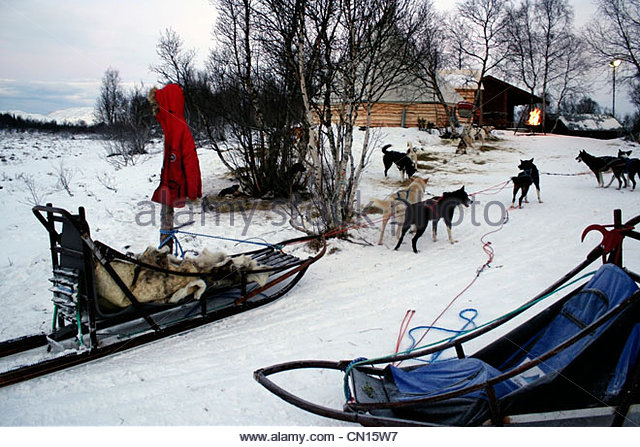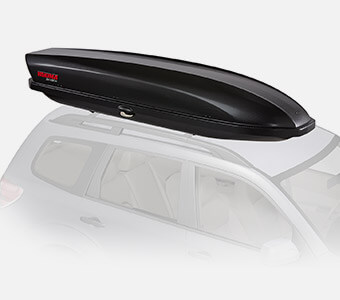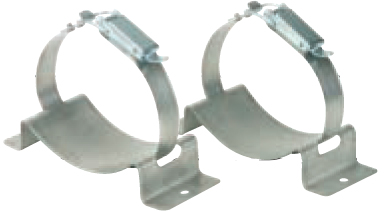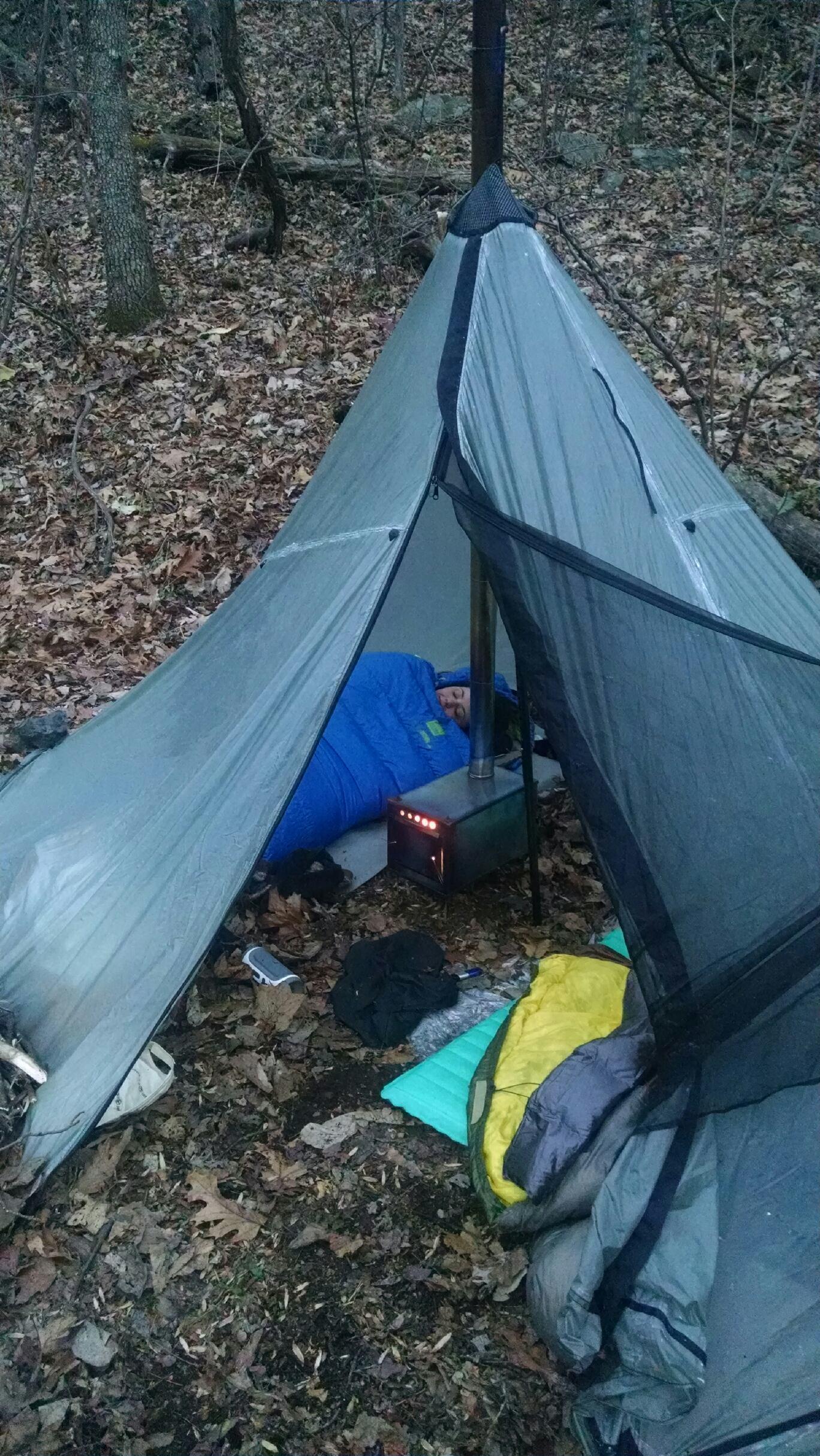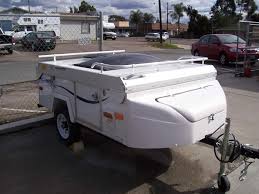Topic
Just musing out loud & thinking outside the box.
Forum Posting
A Membership is required to post in the forums. Login or become a member to post in the member forums!
Home › Forums › General Forums › Winter Hiking › Just musing out loud & thinking outside the box.
- This topic has 32 replies, 9 voices, and was last updated 8 years, 11 months ago by
 Franco Darioli.
Franco Darioli.
-
AuthorPosts
-
Feb 1, 2016 at 9:18 pm #3379601
Anonymous
InactiveThe below musings are inspired by the wish/dream of someday doing a long term Arctic or Antarctica type trip (month plus).
Conventional wisdom dictates for more extreme cold conditions, most of one’s insulation should be in ones sleeping bag/quilt, pad, and to a lesser extent clothes.
Assume one is using, or could use a pulk of some kind, and so bulk especially, and weight to a lesser extent, is less a factor. Would it make sense using a specific type of foam as part of one’s shelter to increase comfort? Winter conditions in extreme climates can require one to spend much more time within a shelter. More specifically, what about layering some foam within two UL and/or light weight fabrics and making a sort of mini tunnel type tent with it (including some poles)?
Perhaps go a step further and use the one sided bumpy foam (like the Evazote foam that is commonly available), and on the bumpy side use a durable IR reflecting fabric like DP VS75 for the inner material and bring some beeswax candles as a source of extra heat besides one’s body heat. The combination of two moisture impermeable fabrics, foam, air pockets, IR reflecting inner, and candles might be enough to provide some comfort if one is stuck in a storm with little to do, and not wanting to lay within ones bag the whole time for warmth?
Or should conventional wisdom prevail in this area?
Feb 2, 2016 at 8:25 am #3379639Back in the day I used to have a ginormous alpine sleeping pad that was essentially 4 inches of egg crate in a thin nylon shell. If I were crossing Antarctica using a pulk I would seriously consider something similar, I guess. I’d hate to die because an inflatable got a puncture and I couldn’t repair it.
Feb 2, 2016 at 12:11 pm #3379673Interesting line of thinking, Justin. I’ve long thought that a traditional dog sled with a nylon bag:

Might be replaced by a “stitch-and-glue” monocoque-constructed sled made as I’ve made four sea kayaks:

Those kayaks weigh 38 pounds each and are far tougher than the commercial fiberglass or kevlar boats available. For a dog sled, it would be more aerodynamic and the cargo compartment would be far more water-tight / weather-tight than the traditional nylon sled bag.
Your “outside the box” ideas have me thinking “inside the box” quite literally. What if you made a 7-foot long, stitch-and-glue sled/pulk, insulated with an inch or rigid foam? Shaped something like a bigger version of this:

it would be aerodynamic, sturdy, water-tight, and insulated. And here’s the kicker: YOU SLEEP INSIDE OF IT. So it takes the place of sled, sled bag, sleeping bag, sleeping pad, and tent. And what a tent it would make!!! Totally water-proof and wind-proof, you’d need some ventilation scheme, but that could be controlled. Heck, you could even breath in and out of a heat/moisture exchanger so you wouldn’t lose so much heat and moisture from breathing. Having enough R value for any design temperature would just be a matter of a little more insulation. If you wanted some heat from candles, etc, you could run a HX chimney through the sleeping compartment but use only outside air and exhaust only to the outside, solving all carbon monoxide issues. “Hot tenting” off of a candle! (hey, don’t laugh, the Inuit heated a whole family’s dwelling with an oil lamp or two).
While it would be easy enough to make it a shirt-sleeve environment inside the sled, I think I’d aim for 50-60F such that a light quilt sufficed for sleeping. Then midnight adjustments would just be an unconscious shift of your quilt.
On any long winter trek, you must have a sled, a bomber tent, and killer sleeping bag. Off the shelf, those are, what? $200-ish plus stitching a bag/cover, $500 and $400? In 1998 dollars, I made three 16-foot kayaks for $231 each of materials (and about 30 hours of labor), mostly in the fiberglass and epoxy.
While you could enter the sleeping compartment from one end, I think a openable half-top might make loading, unloading, entrance and egress all easier. Kind of like this classic place to take a long rest:
 Feb 2, 2016 at 12:45 pm #3379691
Feb 2, 2016 at 12:45 pm #3379691So it takes the place of sled, sled bag, sleeping bag, sleeping pad, and tent.
Yes cooking and melting snow would be a real joy inside something like that.Feb 2, 2016 at 1:18 pm #3379698For sure, traditional, cooking-in-the-tent wouldn’t work in a 18-inch-high space mostly filled by human.
But a stove could be clipped to the outside

and reached from inside the sled/shelter. And/or if a candle or propane-powered heater was built into the RV? (it would be an recreational vehicle wouldn’t it?), a snow-melt pot could also be fixed into the sled and heated from that same heat source. I’ve long thought about that for mushers – the first thing they do after each 4-hour leg is to melt snow for the dogs to drink. If there was a stove / candle / charcoal briquet that could burn while the sled is being pulled, they could scoop snow as they go and arrive at a stop with a few gallons already melted.
Feb 2, 2016 at 1:23 pm #3379704if you’re using a pup style tent, you could have three pieces of ridged foam that are cut to the interior dimensions of each side and floor of the tent and that are hinged together. once the tent’s erected you’d inset the foam, open the panels so that they are against both side walls and the floor of the tent. you could cut triangular panels for the ends.
Feb 2, 2016 at 1:39 pm #3379709Pup-tent style:
There are inflatable, insulated sleeping pads that have velcro along the edges so two (or more) can be joined in to a double- (or multi-) wide mattress to share with your spouse(s) (multiple spouses in jurisdictions where that’s legal like Utah and Saudi Arabia).
Three such pads could be inflated and joined into a triangular prism, leaving just the ends to be sealed. The advantage of the inflated sleeping pads is that they fold / roll up when not in use.
Feb 2, 2016 at 1:44 pm #3379712“If there was a stove / candle / charcoal briquet that could burn while the sled is being pulled, they could scoop snow as they go and arrive at a stop with a few gallons already melted.”
I am having a hard time trying to work out if you are taking the piss or not…
(Aussie slang for making fun of…)
How many fat mushers have you seen ?
Or to put it another way , how many mushers would like to have an extra few gallons in weight on their sleds ?
Anyway, at -30/40 it would take a lot of extra fuel to melt snow over a longer period of time and keep it liquid besides the logistics of having a stove on something that bounces up and down, gets bashed on regular bases and can overturn .Feb 2, 2016 at 2:14 pm #3379717And sleds tip over, etc, so maybe having a flame going isn’t such a good idea.
I wasn’t joking, I have seriously considered all these options and am revisiting some of them after my last sled-based trip (last weekend). Dog mushing is pretty darn demanding due to the speed and sometimes rough trail conditions (snow machines can create linear mogul-like mounds that really pound a sled). But at human-pulled speeds – 2 or 3 mph, it all seems more manageable. 97% of my mileage last weekend was across a frozen lake. Which would normally be perfectly flat. Even the 7.1 earthquake last week only added a few small bumps where the ice broke and run over or under another slab. The sledding conditions were near perfect and if someone sat on top of your gear in your sled, it felt like maybe adding 5 or 10 pounds to your pack load – it was that little work to pull the sleds. In that setting, burning a candle or charcoal in a metal tube or even one person sleeping in shifts while another person pulled, seemed doable. We do have lots of 10-20 mile-long lakes up here and a few over 50 miles long. And sea ice if you go far enough north.
Feb 2, 2016 at 3:29 pm #3379735I was thinking of the dangers involved at the possible temps to be encountered (-30 to -50f) where the smallest mistake becomes a life or death situation.
This particularly came to mind after seeing this photo posted by Justin :

What I see there is a disaster waiting to happen.
But maybe I am misjudging the size of that mat and the distance the sleeping bag would be from the stove if the person laid down flat or rolled over.
Feb 2, 2016 at 4:25 pm #3379745Anonymous
InactiveShe was a bit too close to the stove, but not as close as the pic leads one to believe. I asked her to move a bit over and everything was fine (she had started father away when we originally set up, but moved closer to warm up). My friend is very much a noob when it comes to anything hiking, backpacking, etc. She also didn’t realize that the sleeping bag was insulating her FROM the heat of the stove, but when i quickly explained it, she got it.
(and yes, i know the face plate on the front of the stove was put upside down. I had put it all together, realized it, and then said “oh well, it will still work”, but yeah the holes are usually down below).
Feb 2, 2016 at 4:31 pm #3379747All those leaves near the stove don’t look safe either. I would have cleared them first.
Feb 2, 2016 at 4:38 pm #3379750Anonymous
InactiveBtw, interesting idea David. I would be interested in seeing what you came up with, if you ever decided to go that route. I would probably stick with my idea, just because it’s easier to construct and cheaper.
Nice Kayaks btw!
Hey there, Dean, i hear you on the inflatables thing.
Feb 2, 2016 at 4:53 pm #3379757Anonymous
InactiveI did some, though not as thoroughly as i could have. I periodically felt around the area and it was surprisingly cool. That’s the nice thing about the physics of heat rising. It’s hard to tell from the pic, but the stove is sitting up at least 6 inches or so off the ground.
Feb 2, 2016 at 8:46 pm #3379802Ray Jardine wrote a long blog post on his web site about his Antarctic traverse. The clothes were all DIY if I recall correctly. Ray also addresses the idea of how in such extreme conditions, small lapses can be life threatening (Frostbite). Check out his web site.
Feb 3, 2016 at 12:58 pm #3379912I know a lot of people who have run the Iditarod (1,049-mile dog sled race) including one who was out during a -50F cold snap. He said it stopped being a race and became all about staying alive: travel in groups, hunker down until they got too cold, then run the sled to get the dogs and musher warm(er) until he couldn’t stay awake, stop to sleep but get cold doing that, repeat.
Feb 3, 2016 at 5:44 pm #3379976Anonymous
InactiveHi Bruce, thank you for the suggestion. Awhile back, i read a good portion of Jardine’s blog account of his and his spouses’ Antarctica expedition–definitely intense. But it would do me well to read it again. What’s a lot more vivid in my mind, is a documentary called “Crossing the Ice” about two Aussie guys traversing Antarctica. Course, they were pushing themselves to the extreme in trying to make a record.
I should point out that this is a long off goal, years down the road, and i plan on learning a lot more in a lot of areas before starting to plan this in earnest, as well as getting in much better physical shape.
If i ever materialize the tent/foam idea, i would test it a number of times before even thinking about bringing it to an Arctic like, long term trip.
Should the polymer aerogel’s hit the mainstream market, it might make this idea quite feasible minus the cost. I’m assuming that the above would be much more warmth to weight efficient than the best foams?
Feb 4, 2016 at 8:11 am #3380105Taking Dave’s idea a step further, you could probably make the snow coffin into something like a pop up camper. Or something like the stuff Adventure Trailers makes. This would preserve cargo area, and you’d have to insulate only the lid and carry a quilt. That would also create headroom for cooking, especially if you left a shelf over your legs, or just had one that could be moved. Perhaps you could even mount a heating stove on it, with a chimney. Or, heck, build in the stove and chimney integrally, since we’re engaging in light engineering here already.
Feb 4, 2016 at 9:07 am #3380118I’ve owned a couple tent trailers. In winter, with temps around freezing or a little lower, I would insert Reflectix in the windows, which were easy to secure, because the flaps behind the mesh were zippered. I didn’t try to line the whole interior. By themselves, the Reflectix didn’t do much, but with our radiant catalytic propane heater, the heater became much more efficient. The typical home improvement store Reflectix is only about R-1.3, but for our use it worked out well. Reflectix doesn’t take up much room if it can be laid flat. I used to store them under the camper bunk mattresses. Of course 30F is a lot different than -50F! Here is a picture of one of the campers. You can see the Reflectix in the front window. The roof is insulated with 1″ foam.
 Feb 4, 2016 at 10:40 am #3380140
Feb 4, 2016 at 10:40 am #3380140If you want to look at someone doing a long trek in the Arctic in the Winter, go to Ground Truth Trekking where BPLs own Erin McKittrick and her husband Hig post their past and future trips and their environmental blog. Last Winter they trekked from Nome to Kotzebue along the western Alaska coast. WITH TWO TODDLERS ALONG which really pushes the UL envelope when two adults have to carry everything for 4 people.
Feb 4, 2016 at 7:29 pm #3380257Anonymous
InactiveI’ll check it out David, thanks. Btw, after thinking about your ideas some more, i’m thinking it might overall be more efficient if done right. Does epoxy lose any strength, durability, and/or flexibility in extreme cold temps?
Nick, i wouldn’t trust Reflectix in an extreme cold environment or survival type situation. Besides not being the most durable stuff, air pressure differentials from very different temps might mess with the amount of air volume/pressure in the bubbles–much like a pad you blow up with your warm body air, and over the night as it gets colder, it seems to lose air (rather air pressure).
Feb 4, 2016 at 8:03 pm #3380262Nick, i wouldn’t trust Reflectix in an extreme cold environment or survival type situation.
Neither would I.
Another thought, an insulated folding roof that could open into an A-frame. Pictures below are not the same camper, but you’ll get the idea.

 Feb 7, 2016 at 3:14 am #3380682
Feb 7, 2016 at 3:14 am #3380682At your target conditions there’s usually lots of snow around and it’s a good insulator, so if you have rigid walls just bury your shelter in snow. Walls just need enough insulation to prevent snow from melting when it’s 70F inside. Experience with drifting snow is necessary too.
(edited: pulling a really bulky sled at high winds could be nasty but if you don’t have distant goals you could maybe just wait the storms, or for tailwind)
Have you seen this: http://www.explorersweb.com/polar/news.php?id=16704
Feb 7, 2016 at 11:24 am #3380738Anonymous
InactiveHi Alpo, snow would be a good add on insulator, but i would still want some built in insulation. No, i haven’t seen that design, but it’s very interesting. I like how it pops up, but can be put down lower for pulling. I bet it could be made lighter than what they had designed.
To fix the the bathroom thing, i would probably cut a hole on the bottom, that has a fitted, insulated plug that you can take out to do your thing and then plug up after.
Feb 11, 2016 at 6:01 pm #3381552Hey Justin,
I’ve done a decent amount of camping in the winter here in Winnipeg where it can reach -40 before windchill. I know people us insulation in ice fishing shelters with heaters, but the same problem comes up with any winter shelter: moisture management. No matter what the shelter, moisture will keep you colder and foam in your walls won’t solve that problem. And a couple of candles at -40 won’t make any real difference.
My uncle traveled solo from the top of Lake Winnipeg to the bottom in February years ago, and he resorted to pitching his tent without the fly on because it allowed more moisture to escape. By the end of his trip, he has so much accumulated moisture inside his sleeping bag that he had to slice the outer nylon open and pulled out handfuls of snow/frost.
If you do really want to do a trip in the arctic/antarctic, it would have to be in the summer which would mean very long days, if not 24 hours of sun. Therefore, a good option is to carry a dark coloured tent. A dark tent with sun on it will get significantly warmer, but insulation would actually keep the extra heat out.
-
AuthorPosts
- You must be logged in to reply to this topic.
Forum Posting
A Membership is required to post in the forums. Login or become a member to post in the member forums!
Our Community Posts are Moderated
Backpacking Light community posts are moderated and here to foster helpful and positive discussions about lightweight backpacking. Please be mindful of our values and boundaries and review our Community Guidelines prior to posting.
Get the Newsletter
Gear Research & Discovery Tools
- Browse our curated Gear Shop
- See the latest Gear Deals and Sales
- Our Recommendations
- Search for Gear on Sale with the Gear Finder
- Used Gear Swap
- Member Gear Reviews and BPL Gear Review Articles
- Browse by Gear Type or Brand.

